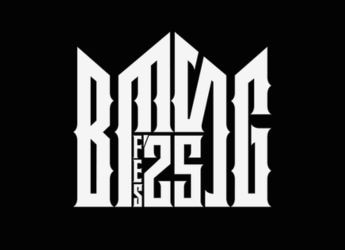- Home
- Science
- Science News
- Bird Inspired Robot With Innovative Wing Design Achieves Self Takeoff and Controlled Flight
Bird-Inspired Robot With Innovative Wing Design Achieves Self-Takeoff and Controlled Flight
Chinese scientists develop RoboFalcon 2.0, a bird-inspired robot that takes off without assistance

Photo Credit: Science Advances
RoboFalcon 2.0 achieves assisted-free takeoff using bird-inspired wing mechanics
Chinese scientists unveiled RoboFalcon 2.0, a flapping-wing robot that has managed to achieve self-takeoff and low-speed flight management. It essentially tries to solve two of the major drawbacks of RoboFalcon version one that can further improve efficiency: firstly, it cannot go slow, and secondly, it requires help to take off. Its reconfigurable wings weigh 800 grams and combine within one wingbeat the motions of flapping, sweeping, and folding in a single step forward for avian-inspired robotics. This adheres to the bird-style takeoff and better pitch and roll management in the air denoted by the researchers.
RoboFalcon 2.0 Mimics Bird Wing Motions to Achieve Self-Takeoff and Stable Low-Speed Flight”
As per the study published in Science Advances, most previous bio-inspired flying robots relied on simplified one-dimensional wing motions, like those of insects or hummingbirds. Conversely, three-dimensional kinematics found in birds and bats are recreated in the RoboFalcon 2.0. Sweeping wings enhance lift and pitching momentum, as confirmed by wind tunnel and simulation results. The flexible wing application could perform assisted-free takeoffs, optimising the design's effectiveness, and further showed real-world demonstrations.
Ventral downstrokes combined with tucked upstrokes generate the necessary lift explained by the researchers, and although thrust for takeoff is much like that in natural bird flight. It is underactuated that the reconfigurable wing system assists in bounding the complexity of flight control.
RoboFalcon 2.0 proved low-speed stability and self-takeoff capability; however, it also proved some limitations, namely, no yaw control and not-so-much energy efficiency. To move forward with avian-inspired robotics and reform new approaches for research on robotic locomotion regarding stability and more efficient use of energy, future refinements have been recommended by the scientists.
Get your daily dose of tech news, reviews, and insights, in under 80 characters on Gadgets 360 Turbo. Connect with fellow tech lovers on our Forum. Follow us on X, Facebook, WhatsApp, Threads and Google News for instant updates. Catch all the action on our YouTube channel.
- Samsung Galaxy Unpacked 2025
- ChatGPT
- Redmi Note 14 Pro+
- iPhone 16
- Apple Vision Pro
- Oneplus 12
- OnePlus Nord CE 3 Lite 5G
- iPhone 13
- Xiaomi 14 Pro
- Oppo Find N3
- Tecno Spark Go (2023)
- Realme V30
- Best Phones Under 25000
- Samsung Galaxy S24 Series
- Cryptocurrency
- iQoo 12
- Samsung Galaxy S24 Ultra
- Giottus
- Samsung Galaxy Z Flip 5
- Apple 'Scary Fast'
- Housefull 5
- GoPro Hero 12 Black Review
- Invincible Season 2
- JioGlass
- HD Ready TV
- Laptop Under 50000
- Smartwatch Under 10000
- Latest Mobile Phones
- Compare Phones
- Honor Win RT
- Honor Win
- Xiaomi 17 Ultra Leica Edition
- Xiaomi 17 Ultra
- Huawei Nova 15
- Huawei Nova 15 Pro
- Huawei Nova 15 Ultra
- OnePlus 15R
- Asus ProArt P16
- MacBook Pro 14-inch (M5, 2025)
- OPPO Pad Air 5
- Huawei MatePad 11.5 (2026)
- Xiaomi Watch 5
- Huawei Watch 10th Anniversary Edition
- Acerpure Nitro Z Series 100-inch QLED TV
- Samsung 43 Inch LED Ultra HD (4K) Smart TV (UA43UE81AFULXL)
- Asus ROG Ally
- Nintendo Switch Lite
- Haier 1.6 Ton 5 Star Inverter Split AC (HSU19G-MZAID5BN-INV)
- Haier 1.6 Ton 5 Star Inverter Split AC (HSU19G-MZAIM5BN-INV)












